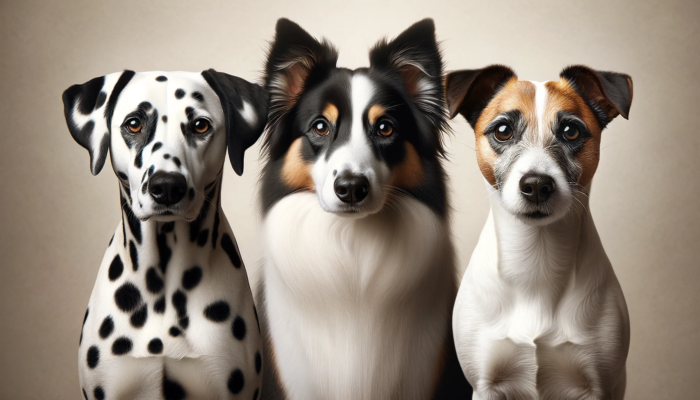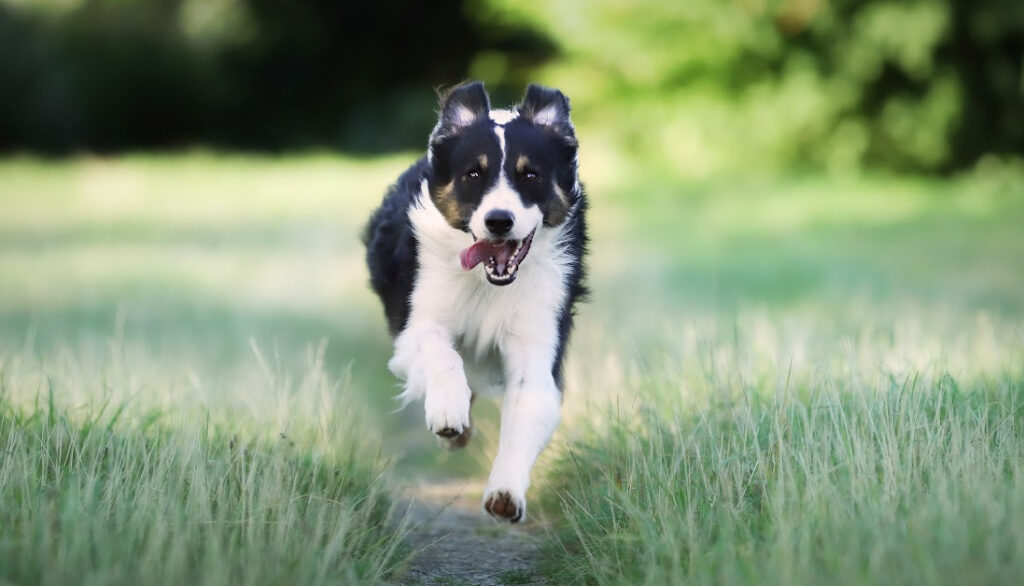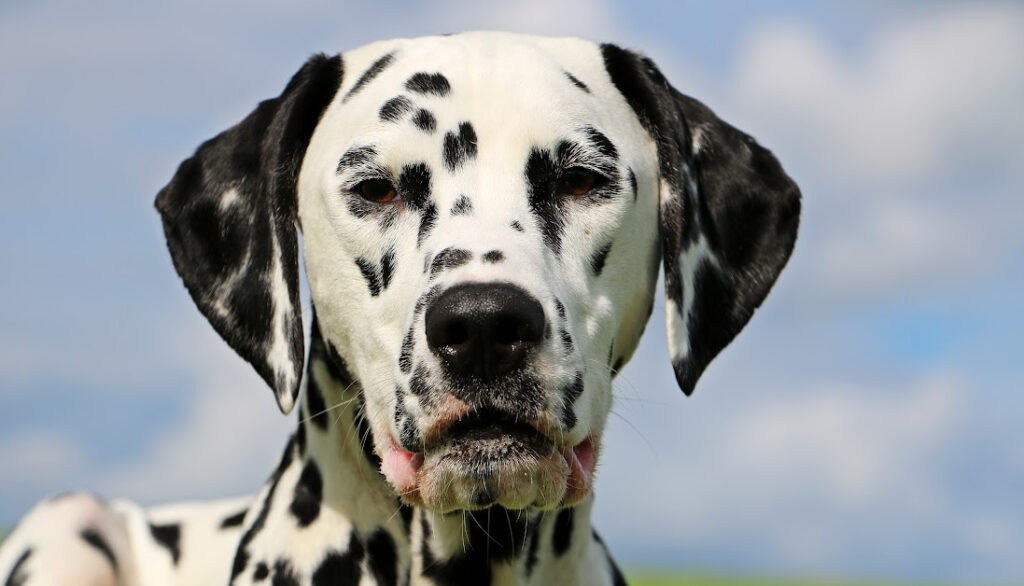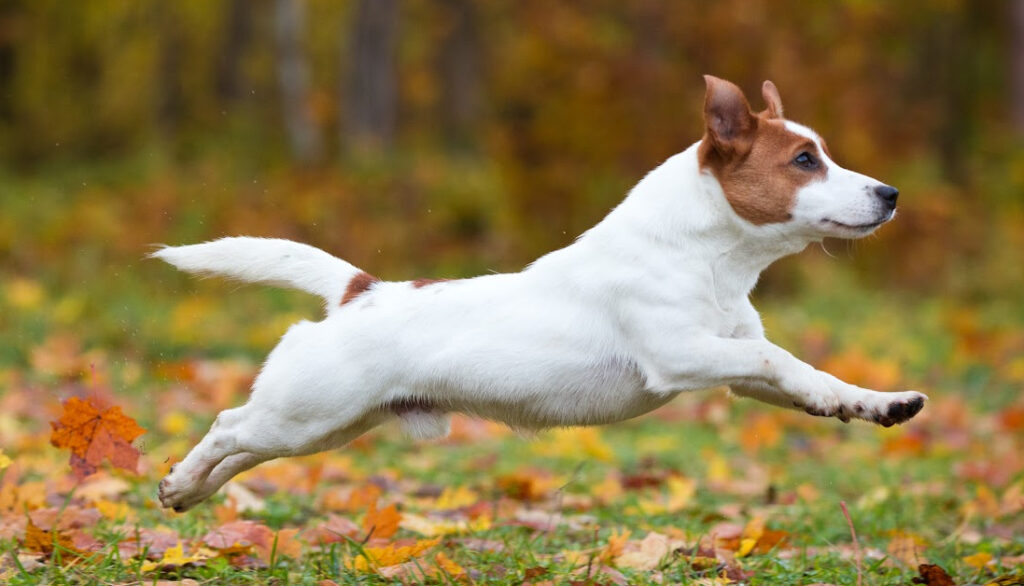Introduction to Hyperactive Dog Breeds
As a holistic veterinarian, I often meet pet parents who find their fur-babies bounding with a level of energy that can be both delightful and challenging. Welcome to the world of hyperactive dog breeds! These high-energy canines are not just brimming with vitality but are also incredibly intelligent, alert, and lively companions. They’re perfect for those leading an active lifestyle, but understanding their unique traits and needs is key.

Understanding the Traits of High-Energy Canines
High-energy dogs are not just ‘hyper.’ They’re often breeds that have been genetically wired for work, such as herding, hunting, or retrieving. These dogs display an impressive stamina, a keen alertness, and a strong drive to stay occupied. They love playtime, thrive on exercise and mental challenges, and enjoy having a ‘job’ to do. It’s their nature to be on the move!
The Importance of Matching Energy Levels for Pet Owners
For potential dog owners, it’s crucial to match your own energy levels and lifestyle with your chosen breed. Remember, a walk around the block is just a warm-up for these vivacious canines! They need plenty of physical exercise, mental stimulation, and consistent training to channel their energy positively. If you’re the kind of person who loves outdoor activities, has time to play and train, you and a hyperactive breed could be the perfect match.
The Science Behind Hyperactivity in Dogs
Wonder why some dogs are more energetic than others? It’s all about genetics. Certain breeds have been selectively bred over generations for their working abilities, leading to traits such as high energy, endurance, and intelligence. It’s not just about being ‘hyper,’ but about having the physical and mental capabilities to work hard and solve problems.
The Role of Exercise and Stimulation in Dog Behavior
A lack of adequate exercise and mental stimulation can often lead to behavioral issues in high-energy breeds. Without proper outlets for their energy, these dogs can become bored, anxious, or destructive. Regular physical workouts, mental challenges, and a balanced diet play a crucial role in managing a hyperactive dog’s energy and maintaining their overall health.
To sum it up, hyperactive dog breeds are not for everyone, but they can be the most loyal, amusing, and loving companions for the right person. They add a spark to the everyday mundane and can teach us to embrace every day with zest! So, if you’re ready for the challenge, let’s dive deeper into some popular hyperactive breeds and how to cater to their unique needs.

The Science Behind Hyperactivity in Dogs
Did you know that the boundless energy you see in hyperactive dog breeds is nothing short of a fascinating scientific phenomenon? It’s about time we dug a little deeper into the exciting world of canine genetics and behavior. Understanding this science will set you on the right path to choose a pup that’s perfectly tailored to your lifestyle.
Genetic Factors Influencing Canine Energy Levels
Fido’s constant need to run and play isn’t just a coincidence – it’s written in his DNA! Certain dog breeds have been selectively bred over generations for jobs that demand physical strength, speed, and endurance. For instance, the Border Collie’s ancestors were herding dogs, requiring them to be agile, quick, and alert. This history still influences the breed today, making them one of the most energetic and hyperactive dog breeds.
Genetics play a large role in determining a dog’s energy level. The genes that regulate metabolism, muscle development, and even temperament can impact how active a dog is. These factors can result in breeds like the Australian Shepherd, known for its tireless energy, or the Jack Russell Terrier, whose compact size does nothing to diminish its enormous zest for life.
The Role of Exercise and Stimulation in Dog Behavior
However, genes aren’t the whole story when it comes to hyperactive dog breeds. Exercise and mental stimulation play a crucial role in shaping canine activity levels.
Think of it this way – a high-energy dog such as a Border Collie is like a sports car. It’s built for speed, and if you don’t take it out for a spin regularly, it’ll rev and sputter in the garage. Similarly, energetic dogs need the right amount of physical activity to burn off their energy and feel content.
But here’s the interesting part – mental stimulation is just as important as physical activity. Activities that challenge your dog’s mind, like puzzle toys or obedience training, can be an effective way to keep them calm and satisfied. Mental stimulation works their brain, tiring them out and reducing hyperactive behavior.
Hyperactive dog breeds are not just lively and playful. They are also incredibly intelligent and quick learners. This combination of physical and mental exercise can greatly contribute to managing their hyperactivity and keeping them happy and healthy.
In essence, the science behind hyperactivity in dogs is a beautiful dance between genetics and environment. Understanding this delicate balance is the key to unlocking a harmonious life with your high-energy fur buddy. After all, knowledge is power, and in this case, it’s the power to channel that boundless canine energy into a positive and enriching bond. So, whether you’re considering adopting a hyperactive dog breed or already have one bouncing around your house, remember – you’re not just dealing with a dog, you’re engaging with a fascinating piece of living science!
Top Hyperactive Dog Breeds for Active Lifestyles
If you’re an active person, finding a dog breed that matches your energy level is essential. Hyperactive dog breeds offer the perfect blend of enthusiasm, energy, and excitement that can keep up with you. Let’s take a look at some of the most energetic dog breeds that are perfect for active owners.
List of Energetic Dog Breeds Suited for Active Owners
1. Australian Shepherd: Known for their intelligence and agility, Australian Shepherds are often found doing what they do best – herding. They’re always ready to run, play, and explore, making them perfect for active families.
2. Border Collie: Often considered the most energetic of all breeds, Border Collies are built for speed and endurance. They require plenty of exercise and mental stimulation to keep them content.
3. Jack Russell Terrier: Don’t let their size fool you! Jack Russells are full of energy and love to be in the middle of the action. These little dogs are speedy, agile, and always ready for a game.
4. Labrador Retriever: Labs are well-known for their love of play. They are very active and will happily join you for a hike, swim, or game of catch.
5. Dalmatian: Historically, Dalmatians were used as coaching dogs, meaning they ran alongside carriages for miles. They still maintain their high stamina and need for regular, vigorous exercise.
Characteristics and Needs of High-Energy Breeds
Most hyperactive dog breeds are characterized by their agility, intelligence, and need for physical and mental stimulation. They are often very playful and thrive on regular exercise, training, and interactive games.
While these breeds offer a wonderful blend of energy and excitement, they do come with specific needs that potential owners should be aware of. Here are a few things to consider:
1. Exercise Needs: Hyperactive dog breeds require a lot of exercise. A simple walk around the block won’t suffice. They need space to run and games to keep them engaged. Some breeds, like the Border Collie or the Australian Shepherd, may also enjoy structured activities like agility training.
2. Mental Stimulation: Smart breeds get bored easily! Puzzle toys, training sessions, and interactive games are great ways to keep them mentally stimulated.
3. Socialization: Many high-energy breeds are also sociable dogs that love being around people and other dogs. Regular social interaction can help channel their energy in a positive way.
4. Diet: With their high energy levels, these dogs often require a diet that supports their active lifestyles.
Remember, owning a high-energy dog breed is a commitment. They require time, patience, and a whole lot of energy! But, the reward is a loyal, fun-loving, and active companion who will always be ready for the next adventure.
Australian Shepherd: A Bundle of Endless Energy
When it comes to hyperactive dog breeds, none can quite match the Australian Shepherd’s relentless vibrancy and enthusiasm. This breed is known for its intelligence, agility, and, most importantly, its boundless energy levels.
Australian Shepherd Temperament and Exercise Requirements
Australian Shepherds, often referred to as “Aussies”, are born workers. They were originally bred to herd livestock, which necessitated agility, stamina, and quick decision-making skills. Even today, Aussies make great working dogs and perform exceptionally well in agility and obedience training.
These traits make the Australian Shepherd an extremely active breed that requires a lot of physical and mental exertion. An idle Aussie is an unhappy Aussie. Without proper exercise, they can become anxious, destructive, and even depressed. Regular, vigorous exercise is crucial to keep them physically fit and mentally stimulated.
On an average, Australian Shepherds require at least 2 hours of exercise per day. This can include walks, runs, games of fetch, or even tasks that challenge their herding instincts. Due to their agile nature, Aussies also excel in dog sports like Frisbee and flyball.
Training Tips for Managing an Australian Shepherd’s Energy
Mastering the energy of an Australian Shepherd might seem challenging at first, but with the right approach, it can be a rewarding journey. Here are few tips to manage their energy:
- Start Early: Start training your Aussie as early as possible. Puppies are more receptive to training, and habits formed at this stage are likely to stick.
- Mental Stimulation: Along with physical exercise, mental stimulation is important. Use puzzle toys, teach new tricks, or engage in activities that utilize their natural instincts.
- Regular Exercise: Make sure your Aussie gets plenty of regular exercise. This keeps them happy and prevents destructive behavior.
- Positive Reinforcement: Use positive reinforcement techniques to encourage good behavior. Aussies are a sensitive breed and respond well to rewards and praises.
Remember, every dog is unique. What works for one Australian Shepherd may not work for another. Patience is key. It takes time to understand your dog’s individual needs and preferences, and a well-exercised, mentally stimulated Aussie is a joy to be around.
Ultimately, owning an Australian Shepherd requires a commitment to active, daily engagement. So, if you are an active individual who enjoys the outdoors and is looking for a loyal, intelligent, and hyperactive dog breed to share your adventures, the Australian Shepherd might just be the right fit for you.

Border Collie: The Athlete of the Canine World
When it comes to hyperactive dog breeds, the Border Collie often tops the list. Known as the athlete of the canine world, this breed is renowned for its incredible drive, stamina, and intelligence.
Understanding the Border Collie’s Drive and Stamina
Originating from the border region between Scotland and England, the Border Collie was bred for herding livestock, particularly sheep. This background has imbued them with an unmatched work ethic, agility, and an insatiable desire to be active.
Border Collies are incredibly intelligent, often ranked as the smartest dog breed. They’re quick learners and problem solvers, which means they not only require physical exercise but also mental stimulation.
Their stamina is legendary. A Border Collie can work all day in the fields, and still have energy left for a game of fetch in the evening. They’re not a breed that’s content with a short walk around the block. They need space to run, tasks to accomplish, and problems to solve.
Activities to Keep a Border Collie Mentally and Physically Stimulated
Due to their high energy and intelligence, Border Collies require a mix of physical and mental activities to stay happy and healthy. Here are some suggestions:
- Herding Trials: These are competitions where dogs are judged on their ability to herd sheep. It’s the perfect activity for a Border Collie, allowing them to use their natural instincts and abilities.
- Agility Training: Border Collies excel in agility courses, which provide both physical exercise and mental stimulation. The variety of tasks in an agility course keeps them engaged and challenged.
- Puzzle Toys: These are toys that require the dog to solve a problem to get a treat. They’re a great way to keep a Border Collie’s mind active.
- Obedience Training: Border Collies are quick learners and eager to please, making them excellent candidates for advanced obedience training. This can also help channel their energy in a positive way.
Remember, a tired Border Collie is a happy Border Collie. But it’s not just about physical exhaustion. They need to be mentally tired as well. Regularly engaging them in activities that stimulate their minds is just as important as physical exercise.
Owning a Border Collie is a commitment. They’re not a breed for the casual dog owner. But for those who are up for the challenge, the rewards are immense. Their intelligence, agility, and boundless energy can bring a lot of joy and vibrancy into your life. But, it’s crucial to ensure you can provide the kind of lifestyle a Border Collie needs to thrive. If you can, you’ll have a loyal, intelligent, and energetic companion who’s always ready for the next adventure.
Jack Russell Terrier: Small Size, Big Energy
Exploring the Spirited Nature of Jack Russell Terriers
Despite their small stature, the Jack Russell Terrier is one of the most hyperactive dog breeds you could come across. They are well known for their spirited nature and boundless energy, a trait that can sometimes be challenging for pet owners who don’t match their zeal.
Don’t let their size fool you; Jack Russells are extremely active and require plenty of physical and mental stimulation to keep them happy and healthy. These vivacious and bold terriers are originally bred for fox hunting, which explains their high prey drive, insatiable curiosity, and the ability to run at exceptionally high speeds.
Their energy level is not just physical, though. They are incredibly clever and quick to learn, always ready for a challenge or to solve a problem. Jack Russells thrive when they are mentally challenged just as much as when they are physically exercised.
Being a dog parent to a Jack Russell means you’re signing up for a fun-filled, high-energy companion who’s always up for an adventure, whether it’s a game of fetch, a long hike, or a complex puzzle toy.
Effective Routines for a Happy and Healthy Jack Russell
While the Jack Russell’s energy can seem overwhelming, having effective routines in place can make managing their dynamism much easier and fun. By establishing a consistent exercise routine, you can help channel their energy positively.
- Daily walks: Two long walks a day, coupled with short potty breaks, are essential for this active breed.
- Playtime: Incorporate games that cater to their hunting instincts like fetch, frisbee or hide and seek.
- Mental stimulation: Puzzle toys, treat-dispensing games, or agility training can keep their minds sharp.
- Positive reinforcement training: Jack Russells respond well to rewards-based training. Remember, they are smart, so keep training sessions short and varied to keep them engaged.
However, while managing the energy of your Jack Russell, it’s also essential to be watchful for signs of exhaustion or overstimulation.
Remember, the goal is a healthy balance. As spirited and active as Jack Russells are, they also need time to rest and recharge. So, ensure you provide a calm and comfortable space for them to retreat and relax after a busy day of activities.
By understanding and meeting the needs of your Jack Russell, you’ll have a happy, healthy, active companion who’s just as ready for the next adventure as you are.

The Role of Diet in Managing Hyperactive Dog Breeds
Nutritional Needs of High-Energy Dogs
Just like humans, the dietary needs of dogs vary based on their size, breed, and level of activity. Hyperactive dog breeds generally require a diet that adequately supports and fuels their high-energy lifestyle. That means a diet rich in high-quality proteins, complex carbohydrates, and healthy fats.
Protein is key in building and maintaining muscular strength, while complex carbohydrates provide the necessary energy for your lively friend to stay active. Healthy fats, like omega-3 and omega-6, support brain function, promote a healthy coat and skin, and provide a concentrated source of energy.
It’s important to note that the caloric intake should be well-balanced with the amount of exercise your dog gets. Too few calories can leave your dog feeling lethargic and undernourished, while too many can lead to obesity.
Best Foods to Support the Health and Vitality of Active Canines
When it comes to feeding your high-energy dog, it’s essential to choose a diet that meets their unique nutritional needs. Here are a few types of food that are typically beneficial for hyperactive dog breeds:
1. High-quality dry food: Look for brands that list real meat as the first ingredient and avoid those that use filler ingredients like corn, wheat, and soy.
2. Wet food: High in water content, wet food is a good option for hydration. It’s also usually quite tasty to dogs. Just be sure it’s a high-quality brand with no unnecessary fillers or sugars.
3. Raw food diet: Some dog owners swear by a raw food diet for their hyperactive dogs. This diet often comprises raw meat, bones, fruits, and vegetables. As the diet closely mimics what dogs would eat in the wild, proponents believe it leads to healthier coats, cleaner teeth, and increased energy levels. However, it’s important to consult with a veterinarian before transitioning your dog to a raw food diet, as it may not be suitable for all dogs.
4. Home-cooked meals: If you have the time and resources, preparing your dog’s meals at home can be a good way to control exactly what goes into their diet. Balance is key here, so be sure to include a good mix of protein, carbohydrates, and vegetables.
Just like us, dogs thrive when their diet is optimized for their lifestyle and health needs. If you’re living with a hyperactive dog breed, understanding their nutritional requirements and providing them with a balanced, high-quality diet is an essential part of supporting their health and vitality. After all, an active dog is not just a pet, but a lively, loving member of the family. So, let’s fuel them right!
Developing a Consistent Exercise Plan for Energetic Dogs
When it comes to managing hyperactive dog breeds, consistency is key. These high-energy canines thrive on routine, with their boundless energy levels needing regular outlets to prevent destructive behavior. Here’s a simple guideline to developing a consistent exercise plan for your energetic dog.
- Define exercise needs: Understand your dog’s breed-specific energy needs. For instance, Border Collies and Australian Shepherds typically require 1-2 hours of vigorous exercise daily, while Jack Russell Terriers may need shorter, more frequent exercise periods throughout the day.
- Establish a routine: Dogs are creatures of habit. Define specific time slots for walks, playtimes, and trainings, and stick to them every day. This gives your dog a predictable daily rhythm.
- Vary the activities: While consistency in timing is essential, variety in activities can keep your hyperactive dog engaged. Mix walks, jogs, fetch games, agility training, and mentally stimulating activities to keep your dog’s interest piqued.
- Involve the whole family: Involving all family members in exercise routines not only shares the load but also reinforces bonding. Remember, your dog sees exercise as a fun time with their favorite humans!
Training Techniques to Channel Hyperactivity Positively
Training is an ideal way to channel your dog’s hyperactivity positively. It stimulates their minds, builds a better bond between you two, and instills good behavior patterns. Let’s look at some effective training techniques specific to hyperactive dog breeds.
- Start with basic obedience training: Teach commands like “sit,” “stay,” “come,” and “leave it.” Positive reinforcement, such as treats or praise, can make this process enjoyable and rewarding for your dog.
- Engage in mental stimulation: Training should also challenge your dog’s mind. Puzzle toys, hide-and-seek games, and trick training can help manage their energy levels and satisfy their need for mental stimulation.
- Have short, frequent training sessions: Hyperactive dogs can benefit from several short training sessions throughout the day. These can be much more effective than one long session as they are less likely to lose interest or become frustrated.
- Seek professional help if needed: Don’t hesitate to seek professional help if you’re struggling to manage your dog’s hyperactivity. A professional dog trainer can provide you with personalized strategies and techniques to handle your dog’s energy levels.
Managing Hyperactive Dog Breeds: An Active Lifestyle with Vibrant Companions
Living with a hyperactive dog breed can indeed be a challenge, but it’s also an incredible opportunity to embrace an active, vibrant lifestyle. These dogs can inspire you to stay active, explore the outdoors and experience the joy and satisfaction that comes from a deep bond with a high-energy canine.
Remember, every dog – hyperactive or not – comes with its own unique package of quirks, traits, and joys. With patience, understanding, and the right strategies, you can successfully channel their energy into positive behaviors, turning potential challenges into enjoyable experiences.
So if you’re someone who loves an active lifestyle and can provide the time, space, and energy these breeds require, a hyperactive dog could be the perfect companion for you. They will not just come tail-wagging into your life, but they will also bring along a contagious zest for life that will keep you on your toes, ensure a healthy lifestyle, and fill your life with unforgettable moments of joy.
Remember, the time and effort you invest in managing their energy will be repaid tenfold in the steadfast loyalty, love, and companionship these breeds offer. So, take the leap, embrace the vibrancy of hyperactive dog breeds and let them lead you to an adventurous, rewarding, and active lifestyle.
Frequently Asked Questions
Q1: What are some examples of hyperactive dog breeds?
A: Some examples of hyperactive dog breeds include Border Collies, Australian Shepherds, Jack Russell Terriers, and Siberian Huskies. These breeds are known for their high energy levels and need for regular exercise.
Q2: How much exercise do hyperactive dog breeds typically need?
A: Hyperactive dog breeds typically need several hours of exercise each day. This can include walks, runs, playtime, and mental stimulation such as training or puzzle toys.
Q3: Are hyperactive dog breeds suitable for all families?
A: Hyperactive dog breeds are best suited to active families who can provide them with the exercise and mental stimulation they need. They may not be suitable for families who are unable to commit to this level of activity.
Q4: What are some strategies for managing a hyperactive dog’s energy levels?
A: Strategies for managing a hyperactive dog’s energy levels include regular exercise, mental stimulation, a healthy diet, and regular veterinary check-ups. Training can also help to channel their energy in a positive way.
Q5: Can a hyperactive dog calm down with age?
A: While some hyperactive dogs may calm down as they get older, many maintain their high energy levels throughout their lives. It’s important to choose a breed that matches your lifestyle, rather than hoping they will change with age.
Dr. Candy, a holistic veterinarian and certified raw dog food nutrition specialist, graduated from Oklahoma State University in 2009 with a DVM and has since specialized in companion animal nutrition, advocating for species-specific diets. With a background in wildlife rehabilitation and oil spill response, she combines holistic health and conventional medicine in her unique approach to treating chronic diseases, allergies, and autoimmune conditions in pets. As the owner of a veterinary practice in Colorado and an author, Dr. Candy is dedicated to educating pet parents and improving the health and happiness of animals.




